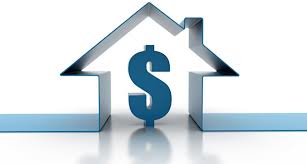 8 Step Flipping Houses Guide for Novices
8 Step Flipping Houses Guide for Novices
Making a profit on real estate ventures requires a lot of hard work. However, those who are willing to put in the effort can expect great returns. Still, novices should learn the proper steps before they start investing on real estate. Below is an 8 step flipping houses guide for novices.
1. Gather Information
The real estate business is a complicated field and reading a single book or article about it will not make a novice an instant expert. Therefore, novices should read, watch and listen to as many books, videos and speakers as they can. A good flipping houses guide should tackle various topics including House Selection and Sweat Equity.
2. Know the Market
The real estate market is subject to trends and changes in the economy. Basically, novices should be aware of two periods: the bull and the bear.
The bull period is used to describe a cycle where the demand for houses is high. On the other hand, the bear period is a cycle wherein the demand for houses is low. Usually, it’s best to buy houses during bear periods because prices are low and sell them during the bull periods.
The problem is, it’s difficult to predict when the market periods will start and end. Therefore, it’s ideal to look for a flipping houses guide that discusses the market in better detail.
3. Choose Houses Based on Resources, Not Price
It’s tempting to buy a low-priced house because it has the potential to give more in terms of returns. However, they can come with multiple problems in terms of renovations. Therefore, houses should be selected based on house quality, time frame, skill set and other important resources.
4. Overestimate Costs
Renovations can get expensive really fast because houses can present hidden problems. A flipping houses guide from a respected real estate authority states that fixer-uppers need to calculate potential costs and add 20%. It’s better to overestimate a project’s budget needs than underestimate them and be buried in debt.
5. Plan Renovations Properly
In order to cut down costs, house flippers need to determine which renovations they should prioritize and which to scrap. That’s because adding a pool to a house can add to its value, but customers won’t buy it if its roof is leaking. An excellent flipping houses guide will discuss different renovations and the value they add to the house.
6. Start with Basic Fixes
The best flipping houses guide states that renovators should start with basic fixes before adding personal touches. That said, it’s best to research what’s “basic” in the neighborhood to get a house at the same market value as those around it. For example, if granite counter tops are all the rage in the neighborhood, house flippers should install granite counter tops in the kitchens of their newly bought properties as well.
7. Sweat Equity
Sweat equity refers to the value added to a home or property through the work of the owner. Simply put, an owner should do some renovation work himself in order to cut down his losses. Simple skills such as painting, sanding and gardening are easy enough to learn. Investors can learn these basic skills so they won’t have to pay for other people to do them.
8. Sell the Home
A proper flipping houses guide will teach novice entrepreneurs to sell houses themselves. That’s because selling through a middleman will only reduce potential profits. Likewise, house flippers should find buyers quickly. The longer a house sits, the more the holding costs accumulate.
Related Articles to Flipping Houses
How To Get Started Flipping Houses






